The following is a review of a different class of headsets, one based on bone conduction technology. The AFTERSHOKZ OPENCOMM headset was provided to me by the marketing director of AFTERSHOKZ, for review.
For those not familiar with bone conduction headsets, there are two key differences between them and the more familiar in-the-ear or over-the-ear headsets. (1) They do not sit in or on your ears. Bone conduction headsets are designed to rest on your cheekbones. (2) By design, they transmit the sound through your cheekbones directly to your cochlea, bypassing your inner ear and ear drum.
Because of this key difference, they result in a qualitative difference in the sound you hear and the experience of wearing headsets. But more on that shortly.
What is in the box:
The OPENCOMM headset arrives attractively boxed and includes the headset, a semi-hard travel case, the User Guide, and the magnetic charging cable.
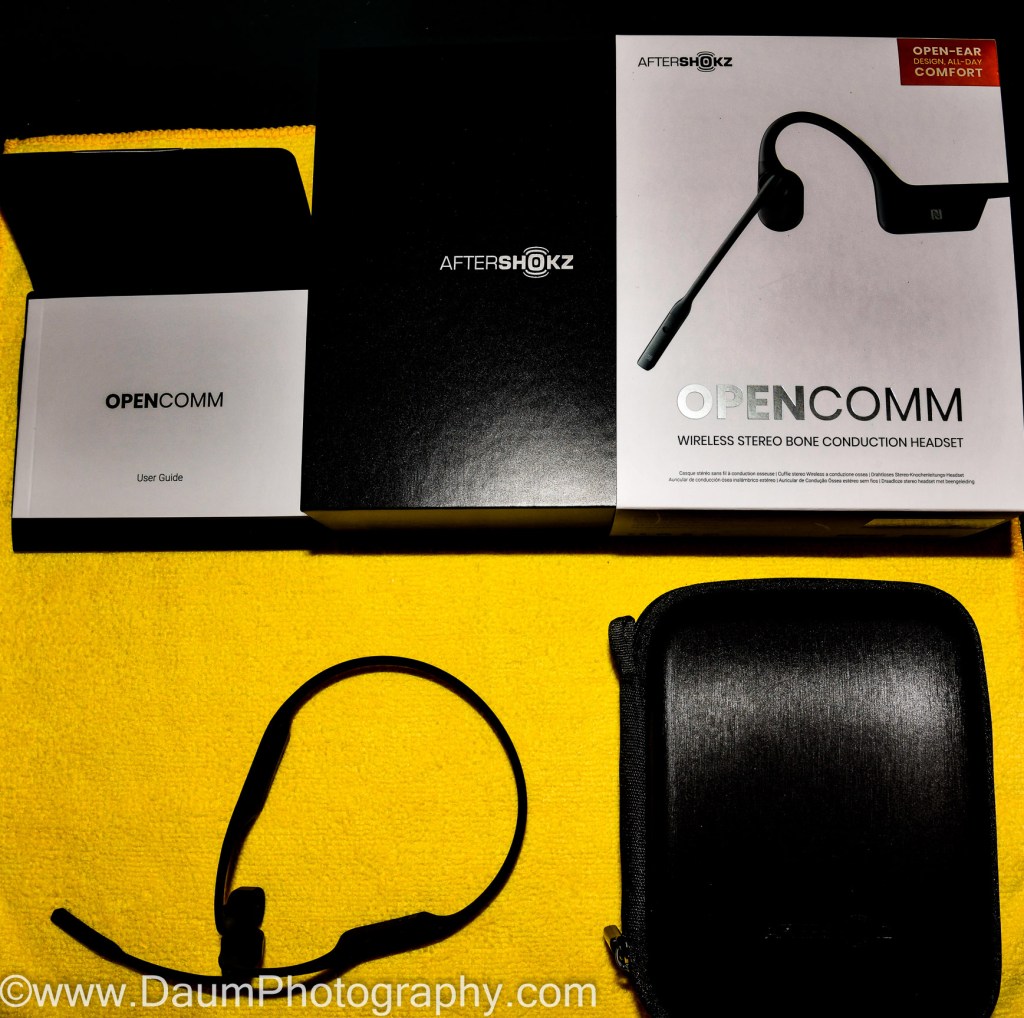
Set Up and Specs
You charge the headset by connecting the magnetic charging cable to a USB port. The User Guide indicates it takes 60 minutes to full charge. According to AFTERSHOKZ webpage[1] a full charge will provide you with 16 hours talk time or 8 hours of listen time. Also, if your battery is running low, you can add 2 hours of talk time with just five minutes charge.
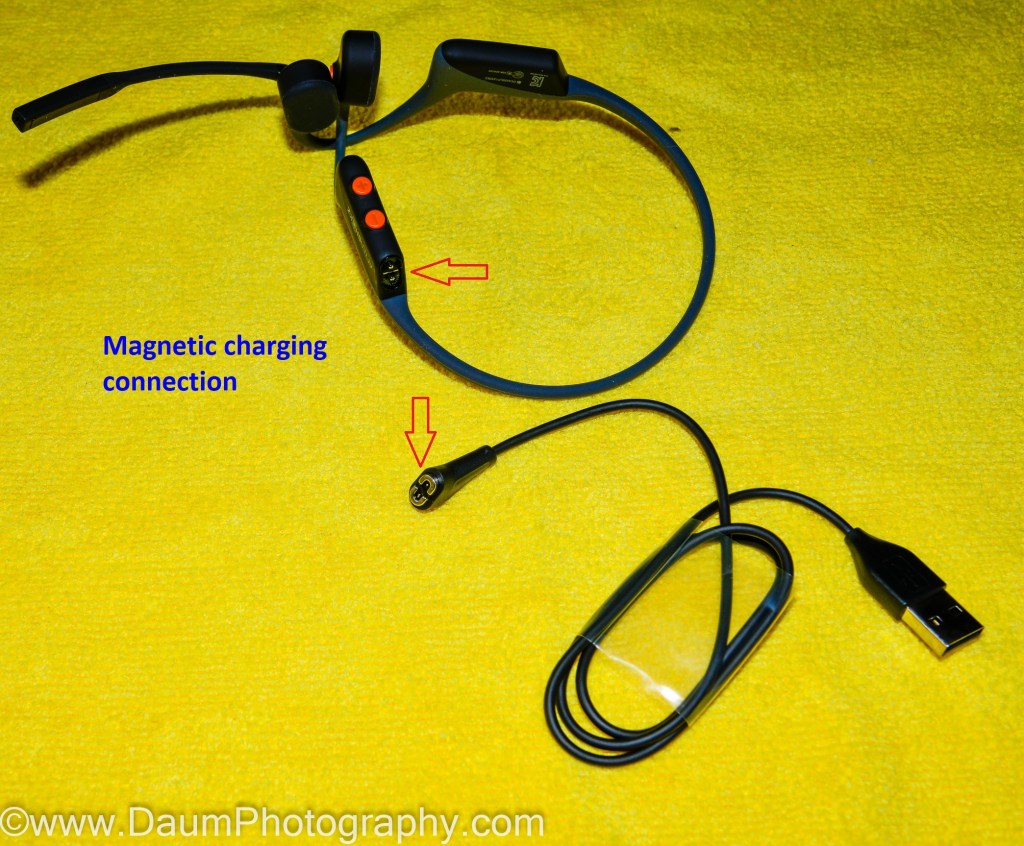
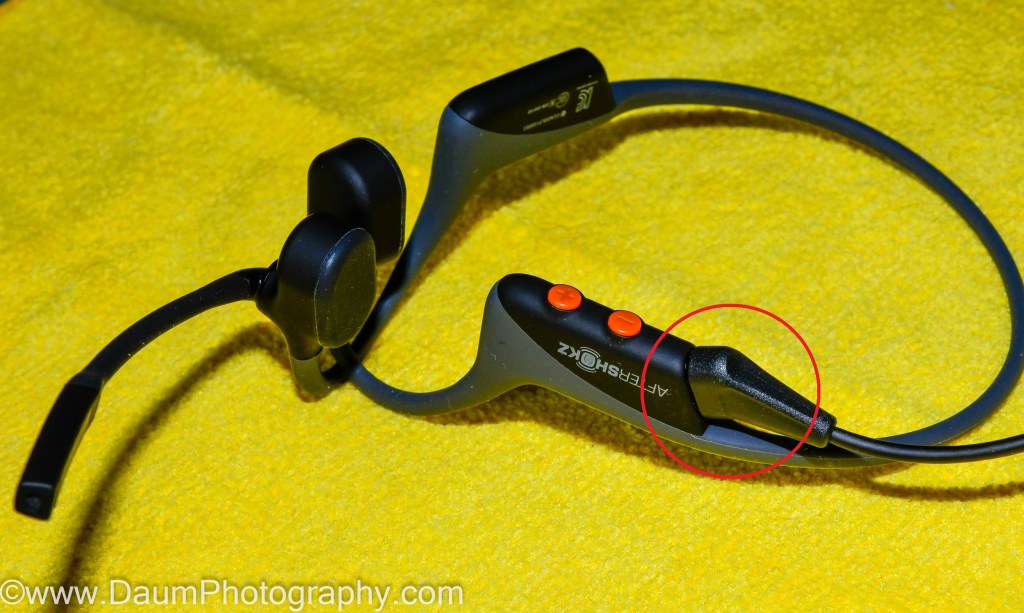
The Bluetooth 5.0 built in the set allows for very quick and easy pairing. Once you are paired, that is it- there is no app to download or further set up with the OPENCOMM headset.
One of the first things you will notice about the OPENCOMM headset is how light weight it is. A mere 33 grams or less than 1.2 oz! It is built on a titanium frame that is completely wrapped in a semi-soft rubber. The frame is not intended to be adjusted (bent) from its preformed shape. In fact, the only adjustable component is the boom mic, which you rotate down to be near your mouth.
The boom appears to house two microphones, one for its noise cancelling software and one to pick up your voice.
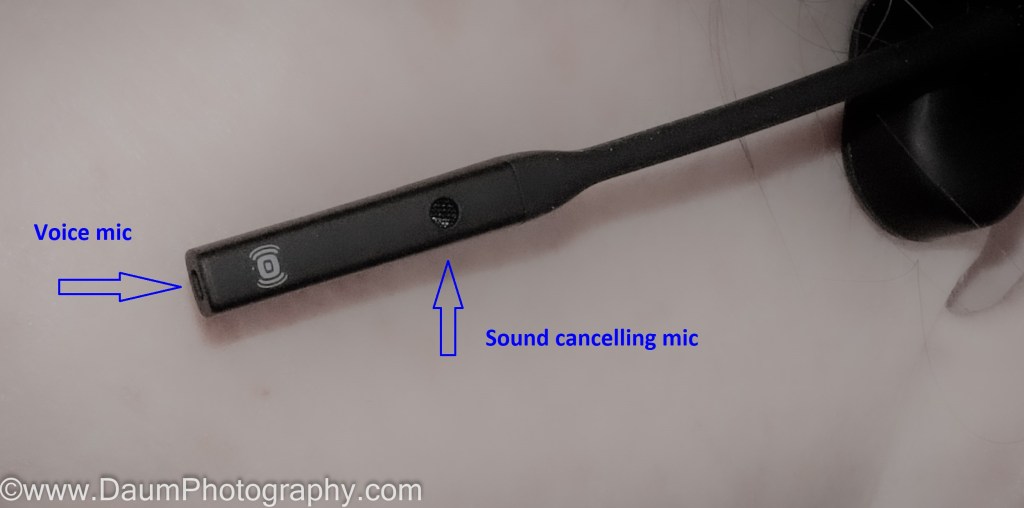
The set is IP55 Water-Resistant. According to DSM&T[2] , that means it is “Protected from limited dust ingress” and “Protected from low pressure water jets from any direction.” In other words, it is fine for use in low dust environments and somewhat water resistant. It even has a built-in moisture protection alert.
The OPENCOMM headset retails for US$159.95 and is manufactured in China.
Sound Test and Actual Use
The unit can only be worn with the mic boom on the left side of the head because of the preformed arch that goes above each ear. It is not reversable. The OPENCOMM headset has three buttons on the unit. Two are on the lower part of the frame just behind the wearer’s right ear. In contrast to the matt black frame, the buttons are orange. One is marked + and one -. The + is used to turn on the headset as well as turn it off, and is used to increase the volume, while the – is used to decrease the volume, and pressing both will mute the call. The third button is located on the same side of the frame, but in front of the ear on the sound conduction component and is a multi-function button. It can be used for a variety of functions including answering incoming calls, hanging up, pausing music, etc. Most presses are accompanied by hearing a voice prompt from the set.
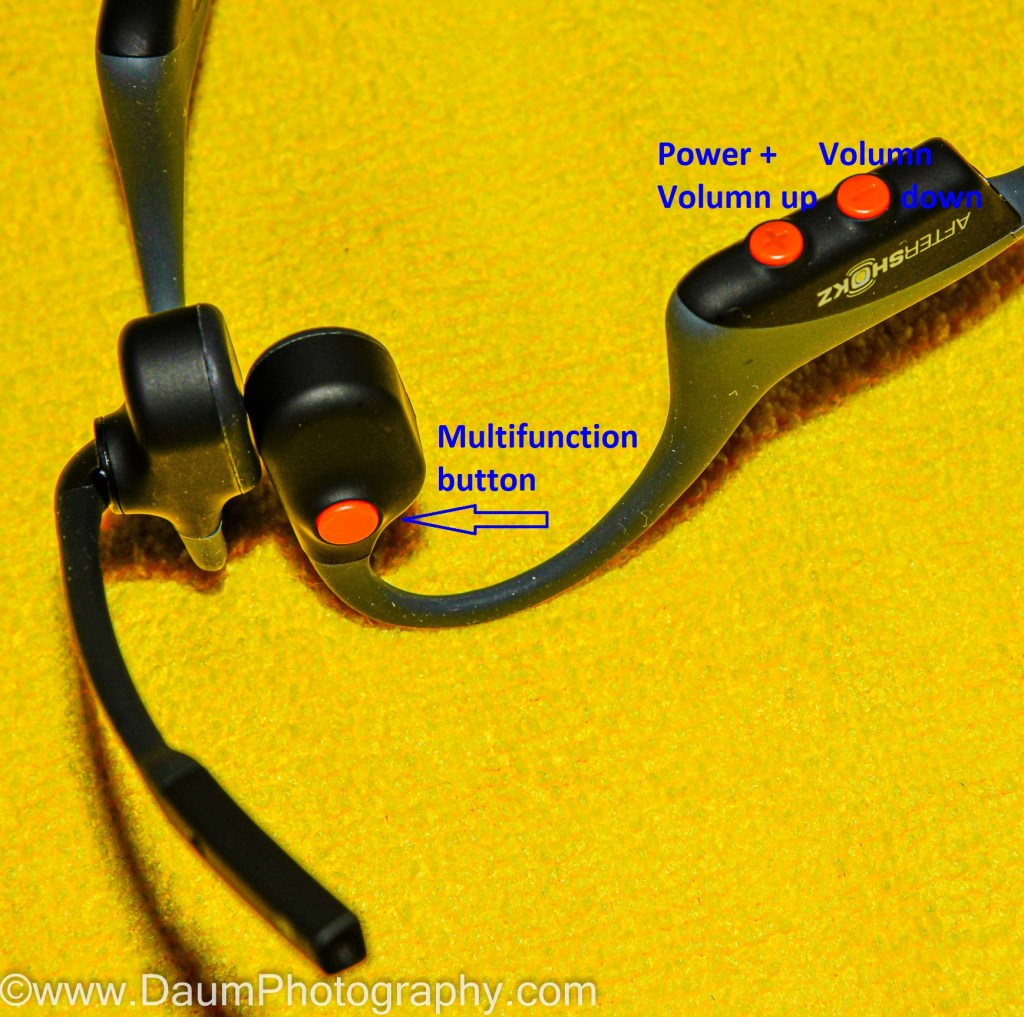
My voice sounded clear and of normal volume, the same as if I was on my cell or land line when talking with incoming or outgoing calls over the OPENCOMM headset, according to the individual I was talking with.
The noise cancelling technology was astounding. For example, the individual I was talking to heard me clearly with no other noise when I was standing right next to a running vacuum, or where I had music playing quite loudly in the room.
Even though these are not truly designed for listening to music because bone conduction can’t reproduce with the finesse that the inner ear can, I still ran a few tests similar to those I normally do with earbuds, for example with the Jabra ANC Elite 85c (see https://insight.daumphotography.com/2020/12/01/jabra-anc-elite-85t-big-sound-little-package/). I listened to Symphony No.1 in D minor ”Gothic’‘ – Havergal Brian. You could hear the vast range of instruments from tympanies to bells, but the separation was muddied and you did not feel like you were actually in a symphony hall. Another test was with Santana’s Evil Ways. In this case the stereophonic separation was faithfully reproduced, but again the distinction between instrumentation and vocals was not clean. Another sound test was with Rodrigo y Gabriela Satori. This is a complex recording with two acoustical guitars. The sound seemed to reproduce the range but lacked crispness.
Initial Conclusions:
The AFTERSHOKZ OPENCOMM headset is an extremely well made, light weight headset. The magnetic charging cable snaps smartly onto the headset and quickly recharges. However, since it is a unique adaptor cable (versus being able to use a more universal USB C) you will have to remember to take the magnetic cable with you (and not lose it). The nicely designed travel case will help in that regard.
The OPENCOMM headset is reasonably comfortable to wear for long periods of time, especially since it does not sit in or on your ears. The headset sound reproduction units rest directly on your cheek bones with a slight but continuous pressure. Some individuals may not find that comfortable, and you cannot adjust the titanium band to modify the pressure. Also, because of the way the titanium band goes behind the ears and around the lower back of your head, it would not be comfortable to sit or recline with your head against a chair back. The frame would be pushed forward as well as the loops going over and around your ears.

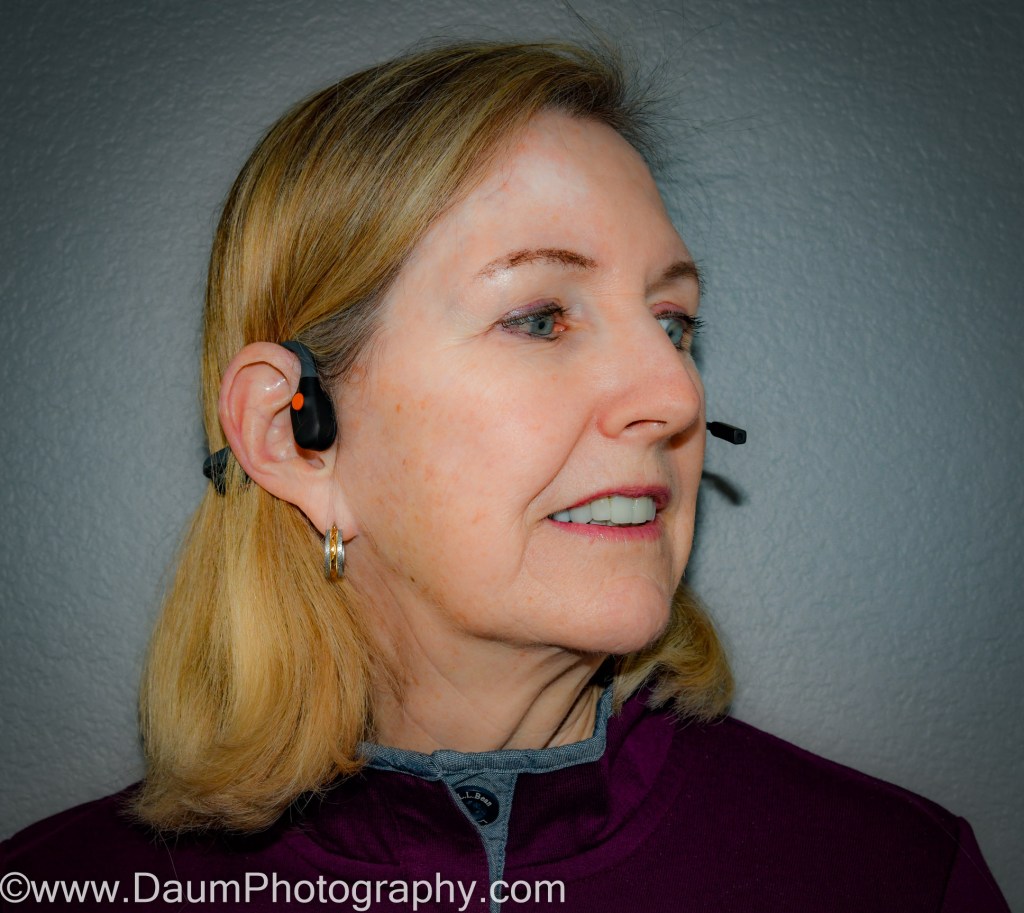
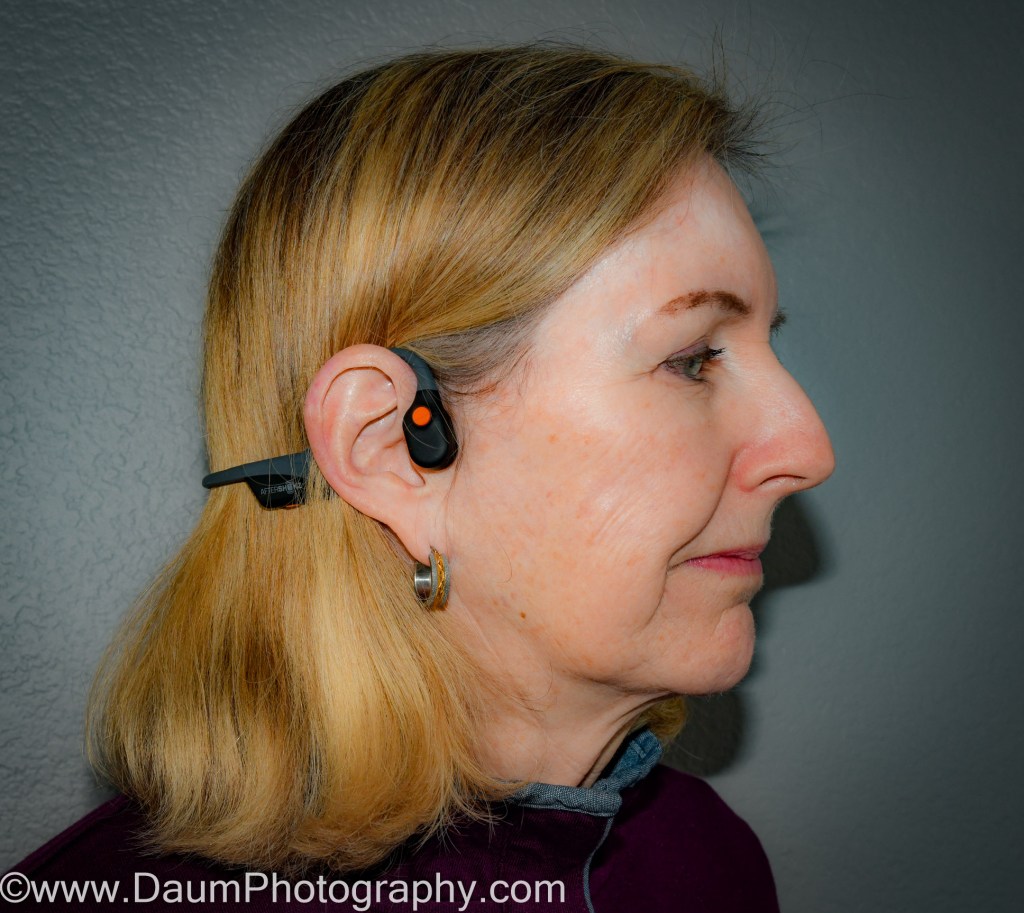
The active noise cancelling (ANC) technology is amongst the best I have found in any headset in terms of what the individual on the other end of the call hears. A caveat of the off-ear design, however, is that you still hear all the noise surrounding you. This can be very helpful or a hindrance. If you are on a call and someone or something nearby is trying to get your attention, they will succeed where that would not be the case with in-the-ear or over-the-ear headsets with ANC. But, if you are trying to hear over the OPENCOMM headset and there is a lot of ambient noise, the ANC will not help you at all on your end- it does not boost or compensate the incoming signal.
So, is the OPENCOMM for you? That depends on your intended use. These would be excellent for situations where you spend extended periods of time talking on your cell phone or over your computer, or on a Zoom video conference (and look a ton better than most over-the-ear headsets with a boom mic). They adequately handle music as well, but if your primary purpose is to listen to music and you enjoy hearing the nuances, then this would not be the best choice.
They would also be an ideal choice if you have any inner ear/ear drum damage impacting your hearing normally through the air.
The OPENCOMM headset would be very good as well for walking or jogging, since they stay put on your head. With the full open ear design, you will also remain aware of your surroundings.
Overall Rating: 5 out of 5
